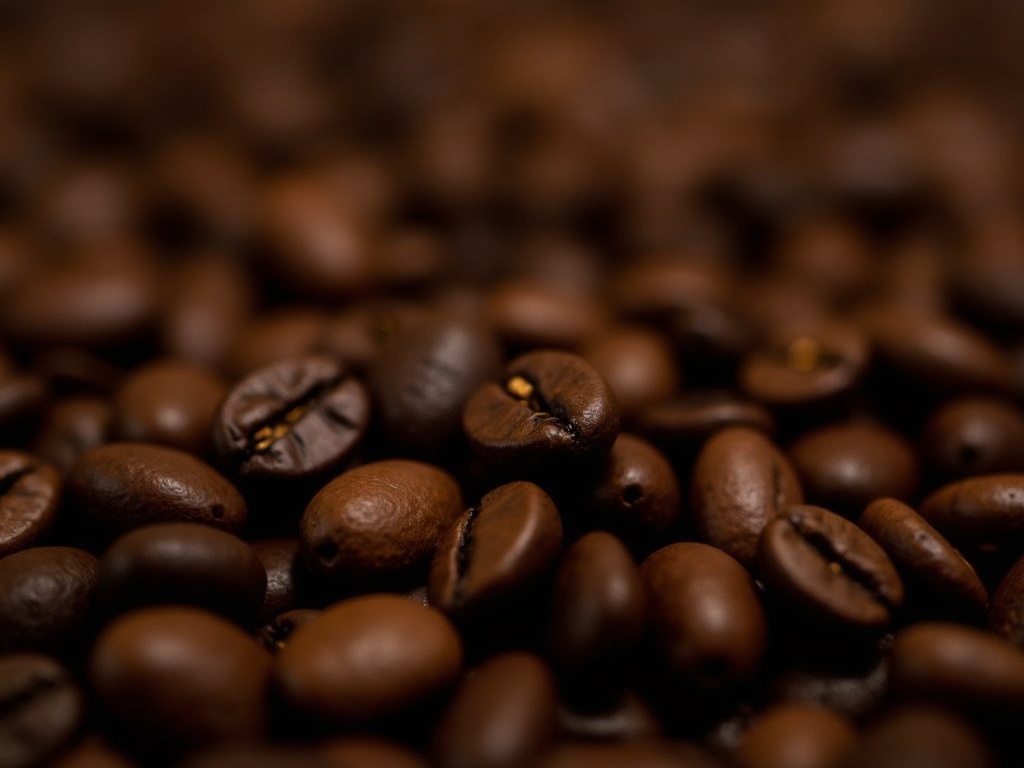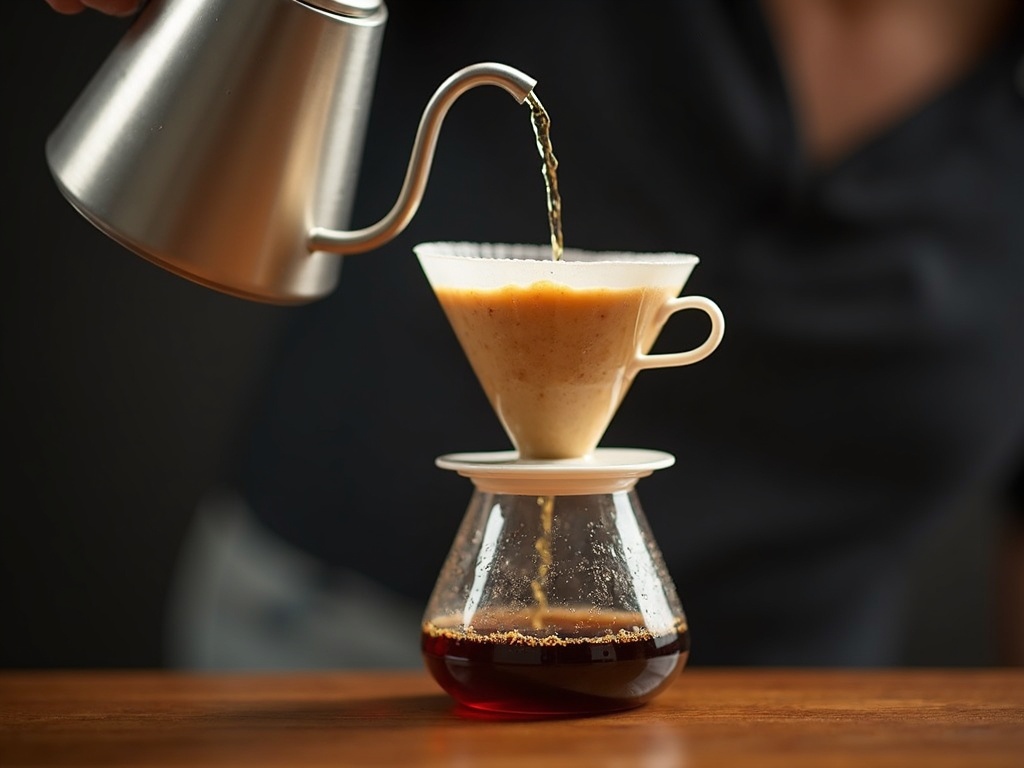The Art of the Brew: A Comprehensive Guide to Filter Coffee
The Art of the Brew: A Comprehensive Guide to Filter Coffee
Introduction: The Enduring Charm of Filter Coffee
Ah, the humble filter coffee. Often overshadowed by the dramatic flair of espresso or the rustic charm of a French press, filter coffee holds a special place in the hearts of true coffee aficionados. It's not just a morning ritual; it's an art form, a symphony of flavors and aromas that unfolds with every sip. From the subtle nuances of a single-origin pour-over to the comforting reliability of a drip machine brew, filter coffee offers a clarity and elegance that is simply unmatched. It’s a method that celebrates the bean itself, allowing its inherent characteristics to shine through without the heavy body or intense concentration of other brewing styles. If you've ever wondered why a well-made filter coffee can taste so remarkably clean, vibrant, and complex, then you're in the right place. Join us as we explore the enduring charm and intricate world of filter coffee.
What Exactly Is Filter Coffee?
At its core, filter coffee is a brewing method where hot water slowly passes through a bed of ground coffee, extracting its soluble compounds, and then flows through a filter medium, separating the liquid coffee from the spent grounds. This process results in a clean, sediment-free cup that highlights the coffee's aromatic oils and delicate flavors.
Unlike espresso, which uses high pressure and finely ground coffee for a concentrated shot, filter coffee relies on gravity and a coarser grind, leading to a lighter body and a more expansive flavor profile. Compared to a French press, which steeps coffee and retains fines, filter coffee offers a cleaner mouthfeel and a brighter taste. The magic lies in the filter, which traps insoluble particles and oils, leading to that characteristic clarity and often a brighter, more nuanced cup. It's about a gentle, precise extraction that allows the subtle notes of the coffee to truly sing.
The Essential Elements of a Perfect Brew
Crafting the perfect cup of filter coffee isn't about rigid rules, but understanding the key variables that influence the final taste. Mastering these elements will elevate your brewing game significantly.
The Beans
It all starts here. The quality and freshness of your coffee beans are paramount.
- Freshness: Coffee is best enjoyed within a few weeks (or even days) of roasting. Look for roast dates, not "best by" dates.
- Quality: Invest in good quality, ideally specialty-grade beans. Single-origin beans often reveal unique regional characteristics.
- Roast Level: While personal preference plays a role, medium roasts are generally recommended for filter coffee. They offer a balance of acidity, sweetness, and body, allowing the origin flavors to come through without being overshadowed by roast notes. Darker roasts can taste bitter or smoky, while very light roasts might be overly acidic or underdeveloped.
The Grind
The grind size is perhaps the most critical variable after the beans themselves. It dictates the contact time between water and coffee.
- Consistency is Key: A high-quality burr grinder (not a blade grinder!) is essential for an even, consistent grind. Inconsistent grinds lead to uneven extraction, resulting in both bitter (over-extracted fine particles) and sour (under-extracted coarse particles) flavors in the same cup.
- Medium-Coarse: For most filter methods, a medium-coarse grind resembling sea salt or coarse sand is ideal. Adjust slightly finer for faster brewing methods (like some drip machines) and slightly coarser for slower ones (like Chemex).
The Water
Coffee is 98% water, so its quality profoundly impacts the taste.
- Temperature: The optimal brewing temperature is between 195-205°F (90-96°C). Water that's too hot can scorch the coffee and extract bitter compounds, while water that's too cool will lead to under-extraction and a weak, sour cup.
- Quality: Use filtered water free of strong odors or tastes. Tap water with high mineral content or chlorine can negatively affect the flavor.
The Ratio
The coffee-to-water ratio is your recipe. It determines the strength of your brew.
- Golden Ratio: A common starting point is often referred to as the "golden ratio" – 1:15 to 1:17 (coffee to water by weight). This means for every 1 gram of coffee, you use 15 to 17 grams of water.
- Example: For a 300ml (approx. 300g) cup of coffee, you would use roughly 18-20 grams of coffee (300 / 16 = 18.75). Using a digital scale is highly recommended for accuracy.
The Filter
The type of filter also contributes to the final cup.
- Paper Filters: The most common. They absorb oils, leading to a very clean, bright cup with little to no sediment. Rinse paper filters with hot water before brewing to remove any papery taste.
- Metal Filters (Reusable): Allow more oils and fines to pass through, resulting in a fuller body and sometimes more intense flavors, though with a slight sediment.
- Cloth Filters (Reusable): Offer a balance between paper and metal, providing a clean cup with good body, but require careful cleaning.

Popular Filter Coffee Brewing Methods
The world of filter coffee is wonderfully diverse, offering methods to suit every preference and lifestyle.
Drip Coffee Machines
The quintessential home brewer.
- Pros: Convenience, ease of use, consistent results (with a good machine), ideal for brewing larger batches.
- Cons: Less control over variables like water temperature and pour rate compared to manual methods.
- Tip: Look for machines with a "showerhead" distribution and the ability to maintain proper water temperature.
Pour Over (e.g., Hario V60, Chemex)
These methods offer unparalleled control and are beloved by enthusiasts for their ability to highlight delicate flavors.
- Hario V60: A cone-shaped dripper with a large single hole, promoting fast extraction and a clean, bright cup. Requires a precise pour.
- Chemex: A visually striking hourglass-shaped brewer with a thicker paper filter, resulting in an exceptionally clean, sediment-free, and often lighter-bodied cup.
- Pros: Maximum control over brewing variables, allowing for incredibly nuanced and flavorful coffee.
- Cons: Requires more skill, patience, and dedicated equipment (gooseneck kettle, scale).
Aeropress (as a Filter Method)
While known for its versatility, the Aeropress excels at producing a clean, concentrated filter-style coffee.
- Pros: Portable, durable, fast brewing, easy cleanup, allows for experimentation with immersion and filter styles.
- Cons: Typically brews a single serving.
Siphon/Vacuum Pot
A captivating and theatrical brewing method that yields a clean, full-bodied cup.
- Pros: Produces a very clean and vibrant cup, visually impressive brewing process.
- Cons: Requires specialized equipment, more complex to operate, and delicate.
Step-by-Step Guide to Brewing a Delicious Pour Over (Example)
Let's walk through brewing a pour-over, a method that exemplifies the precision of filter coffee.
- Heat Water: Bring fresh, filtered water to 200-205°F (93-96°C).
- Prepare Filter: Place your paper filter in the dripper. Rinse it thoroughly with hot water, discarding the rinse water. This removes any paper taste and preheats your brewer.
- Grind Coffee: Grind your fresh coffee beans to a medium-coarse consistency. For a typical 12oz (360ml) cup, use around 22-24 grams of coffee.
- Add Coffee: Place the ground coffee into the rinsed filter, gently shaking to level the bed.
- Tare Scale: Place your dripper and mug/server on a digital scale and tare it to zero.
- The Bloom (30-45 seconds): Start your timer. Pour about 2-3 times the weight of your coffee in water evenly over the grounds (e.g., 44-66g water for 22g coffee). This is the "bloom" – the release of CO2 from the fresh coffee, crucial for even extraction. Let it sit for 30-45 seconds.
- Continue Pouring: Slowly and steadily pour the remaining water in concentric circles, from the center outwards, avoiding the filter walls. Aim for a total brew time of 2:30 to 3:30 minutes (depending on the dripper).
- Serve and Enjoy: Once all the water has passed through, remove the dripper, and enjoy your perfectly brewed filter coffee!

Troubleshooting Common Filter Coffee Problems
Even experienced brewers encounter issues. Here's how to diagnose and fix common problems:
Too Bitter
- Cause: Over-extraction. You've pulled too many solids out of the coffee.
-
Solutions:
- Grind Coarser: Increase your grind size.
- Lower Water Temperature: Ensure water isn't too hot.
- Reduce Brew Time: Speed up your pour or use less water.
- Reduce Coffee Amount: Use slightly less coffee for the same amount of water.
Too Sour/Weak
- Cause: Under-extraction. Not enough soluble compounds have been extracted.
-
Solutions:
- Grind Finer: Decrease your grind size.
- Increase Water Temperature: Ensure water is hot enough.
- Increase Brew Time: Slow down your pour or use more water.
- Increase Coffee Amount: Use slightly more coffee for the same amount of water.
Muddy Taste
- Cause: Sediment in the cup.
-
Solutions:
- Grind Coarser: Your grind might be too fine, creating excessive fines that pass through the filter.
- Check Filter: Ensure the filter is properly seated and not torn.
- Rinse Filter: Thoroughly rinse paper filters before brewing.
Elevating Your Filter Coffee Experience
Ready to take your filter coffee to the next level?
- Experiment with Different Beans: Explore beans from various origins (Ethiopia for floral notes, Colombia for balanced sweetness, Sumatra for earthy tones) and different roasters.
- Invest in a Good Burr Grinder: This is arguably the most impactful upgrade you can make. A consistent grind is the foundation of good coffee.
- Pay Attention to Water Quality: Consider a water filter or even specific coffee brewing water tailored to enhance flavor.
- Consider a Gooseneck Kettle: Essential for pour-overs, it gives you precise control over your water flow, crucial for even saturation of the coffee bed.
- Clean Your Equipment: Regular cleaning prevents stale coffee oils from tainting your next brew.
Conclusion: Savoring the Simple Pleasures
Filter coffee, in all its forms, is a testament to the idea that simplicity can lead to profound satisfaction. It’s a method that invites patience, rewards attention to detail, and ultimately celebrates the inherent beauty of the coffee bean. Whether you prefer the ritualistic precision of a pour-over or the straightforward efficiency of a drip machine, understanding the fundamentals will unlock a world of flavor. From the vibrant acidity of a light roast to the comforting sweetness of a medium roast, filter coffee allows each note to sing with clarity. So, embrace the journey, experiment with techniques, and most importantly, savor the exquisite, clean cup that awaits you.
What's your favorite filter coffee brewing method, and what makes it special to you?
```
Leave a comment
Please note, comments must be approved before they are published